
A Dynamic Space for a Developing Life
During pregnancy, the abdomen widens to accommodate for its new, ever-growing inhabitant. As a result, the straight abdominal muscles, also known as the rectus abdominis, increasingly start to lose their ability to function. These muscles span from the sternum to the pubic bone, and the very point where the belly protrudes outward the most. If you overwork this muscle, the baby gets pushed outward and creates pressure which leads to separation of the two sides of the six-pack muscles, also known as rectus diastasis. This will inevitably cause discomfort over the length of the pregnancy.
On the other hand, the lateral abdominal muscles have a much different function. There are three layers, the internal and external obliques, or obliquus abdominis internus and externus, and the transverse abdominus, or transversus abdominis. These muscles envelop the entire abdominal cavity and are lined with fascia, which together support all of the internal organs, and in the case of pregnancy, can maintain their function while the belly continues to grow. They work in a complimentary way by securely holding the baby in the abdominal cavity while stretching to allow space for the baby to grow.
Straight and Lateral Abdominal Muscles during Pregnancy
But this doesn't have to be the case. With targeted exercises, you can strengthen the lateral abdominal muscles and help them to take on the extra work of the rectus abdominus, even while they are stretching. In strengthening your core the right way, you can help support your baby while you support your own back.
Exercises for a Balanced Core
The following exercises can be done easily at home, without the need for any equipment. Once you have practiced a couple of times, you will find that the entire sequence doesn't take long, and you will achieve notable results with regular practice.
Pregnant Cat
Start on all fours. Place wrists carefully under shoulder and the knees directly under the hips to make space for the belly. First let the belly relax (fig. 1)
Then hug the belly inwards with the strength of your deep abdominal muscles (both obliques and transverse abdominus), as if you were using your belly to bring your baby closer to your body (fig. 2).
Repeat the exercise following your own pace.
Effect: In this exercise you strengthen the deep abdominal muscles that not only support your baby, but support your spine as well.
Side Plank
Come into side plank. Be careful to align the wrist directly under the shoulder and form a straight line with the body. Stack the feet or offset the feet slightly on the floor (fig. 3).
Alternatively, you can practice this exercise with the knees on the ground, which reduces the overall amount of effort required, or on the forearm to relieve the wrists. In this way, the exercise is accessible to anyone, regardless of their fitness level (fig. 4).
Hold the posture for a while, breathing calmly and deeply. Then switch sides.
Effect: The deep abdominal muscles will be naturally activated by the static hold against gravity and work to train them to further stabilize your stomach.
Plank Pose
Starting from all-fours, straighten the legs to come into plank pose. Align the wrists over the shoulders and the legs can be either hips-distance or closed. Create a straight line with the entire body from the heels, to the backs of the legs, to the buttocks to the shoulders. Your gaze is directly in front of you, in order to keep your neck in a harmonious extension of the entire length of the spine.
Alternatively, you can go on the forearms to relieve the wrists in this exercise, or to lessen the entire load of the exercise, lower your knees onto the ground. The weight should be just above the kneecap, not directly on the knee.
Stay here a while and breathe calmly.
Effect: As a classic complete-body exercise, this posture is also suitable during pregnancy and naturally activates the deep abdominal muscles. This will support your baby along with your spine.
Enjoy your practice!
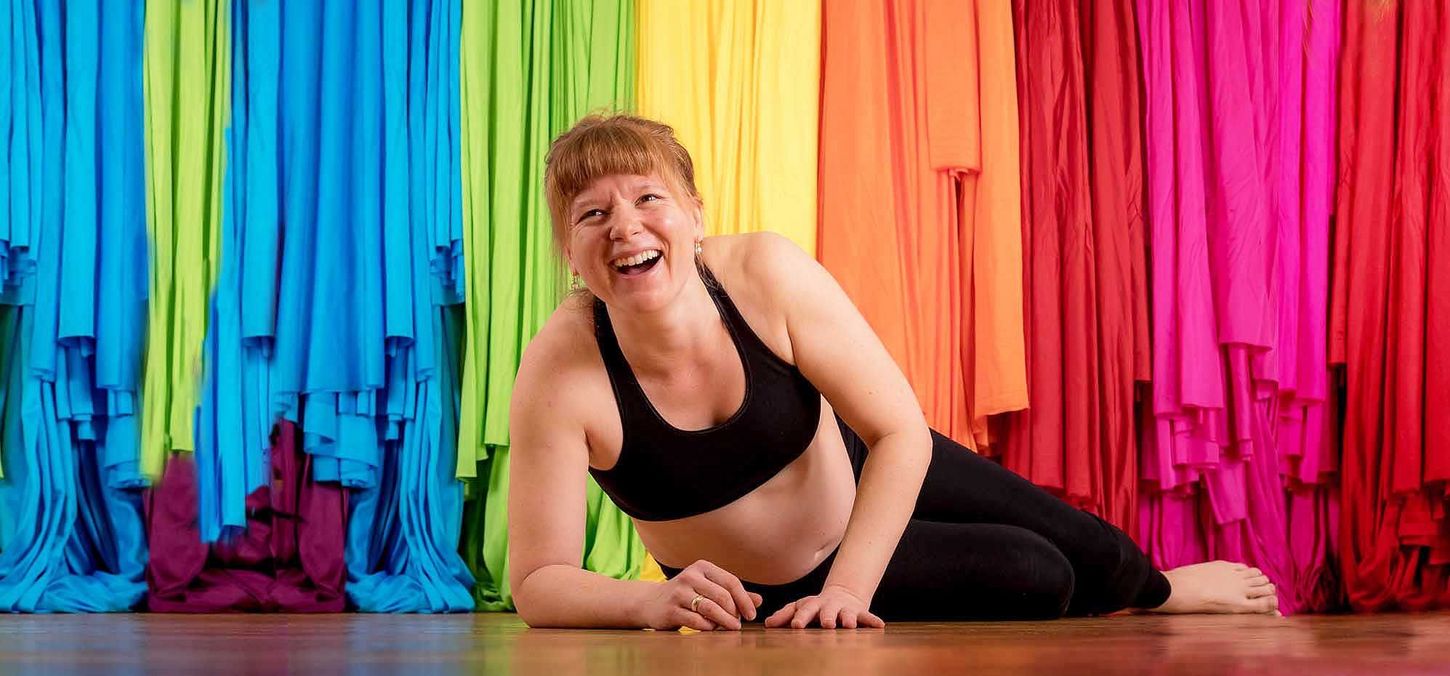


 Dr. Melanie Steiner
Dr. Melanie Steiner
 Dr. Ronald Steiner
Dr. Ronald Steiner
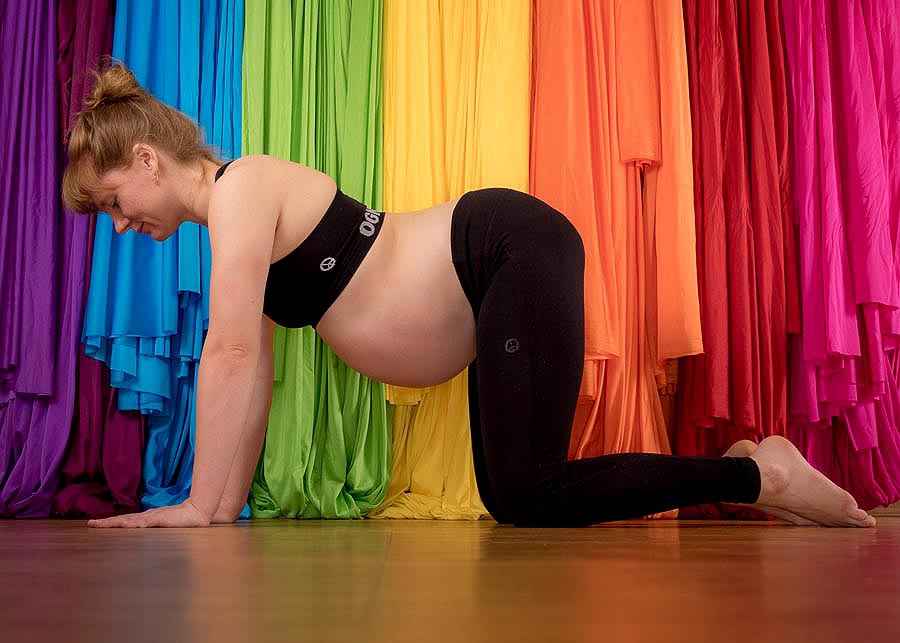
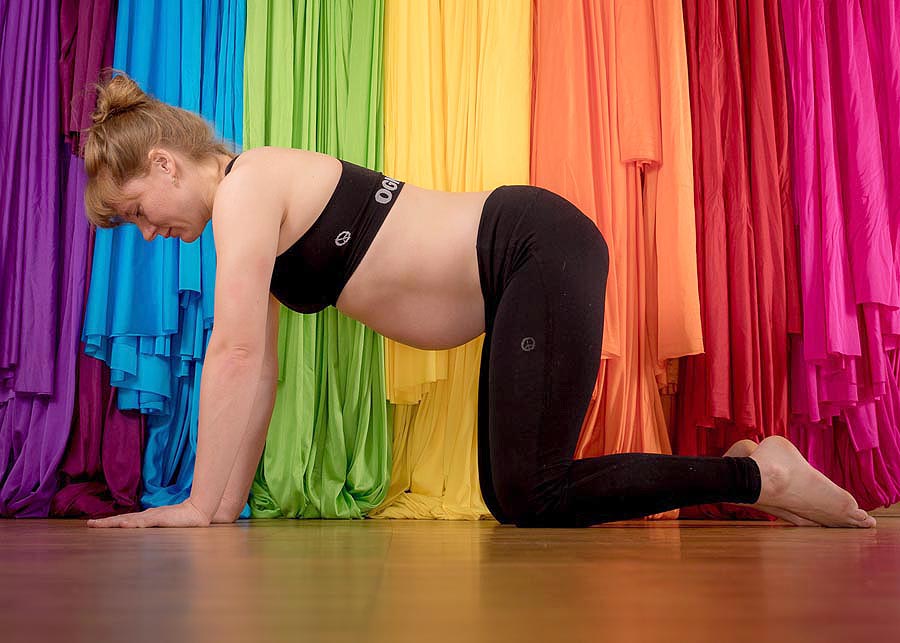
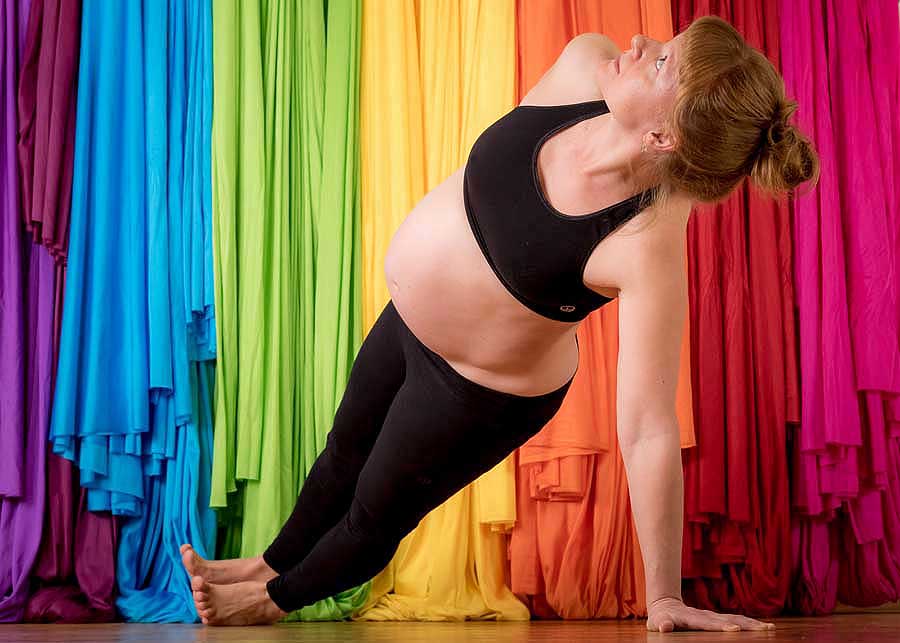
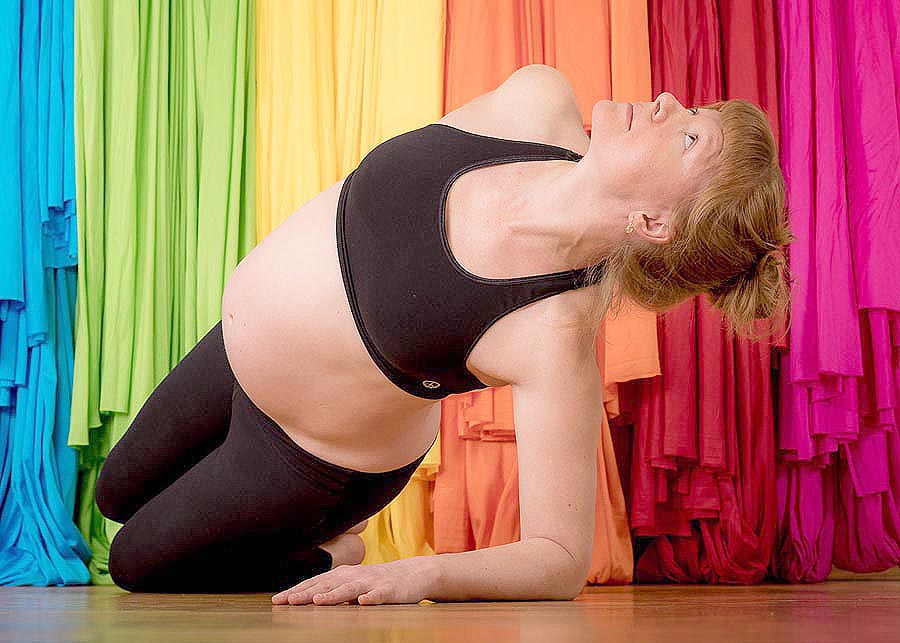
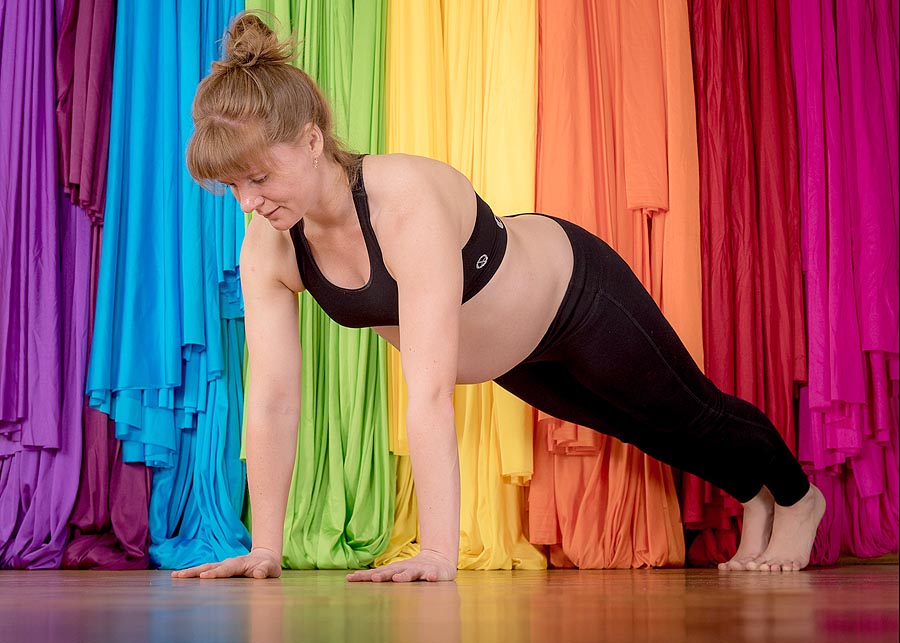
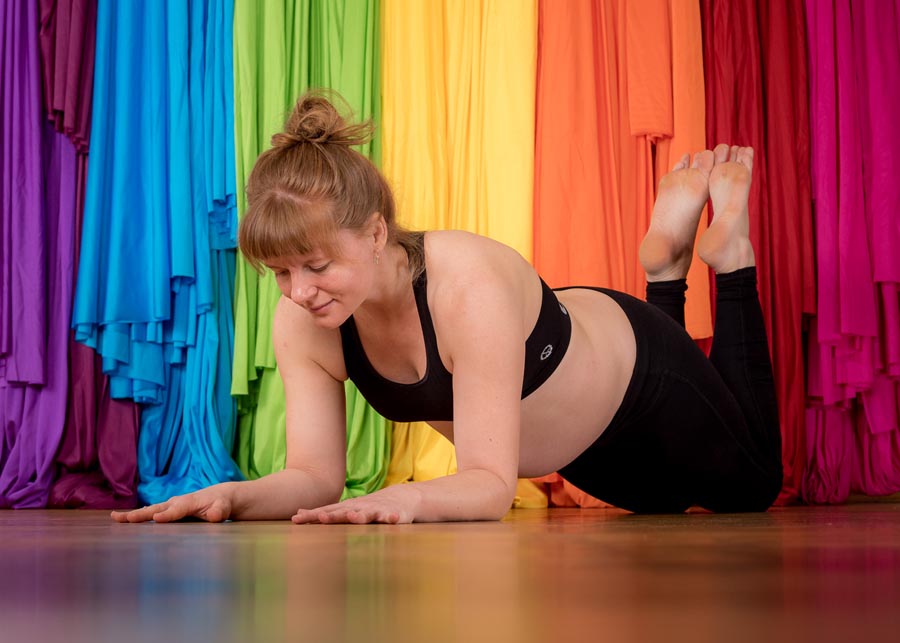

Messages and ratings